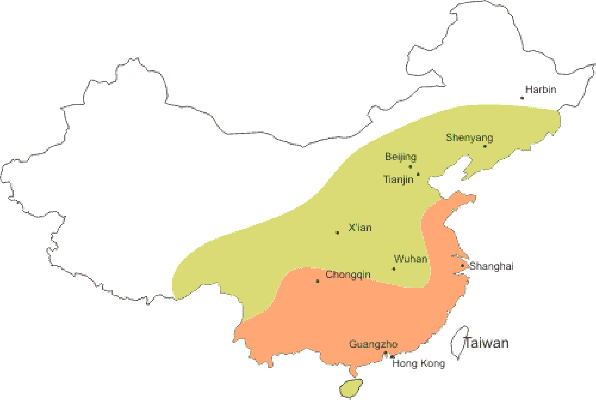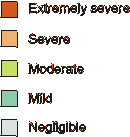
 |
The map to establish a portrait of the corrosion in China has been extracted from the following reference: Corrosion, Vol. 55, No. 1, page 66.


A report released in 1998 by the World Health Organization (WHO) noted that of the ten most polluted cities in the world, seven can be found in China. Sulfur dioxide and soot caused by coal combustion are two major air pollutants, resulting in the formation of acid rain, which now falls on about thirty percent of China's total land area. Statistics indicate that, as a result of industrial production, 21 million tons of sulfur dioxide are emitted into the atmosphere each year, in addition to 14 million tons of smoke-filled dust and another 13 million tons of suspended particulate matter. Industrial boilers and furnaces consume almost half of China's coal and are the largest single point sources of urban air pollution
The Liaoning Province in northeast China, home to 25 million urban dwellers, is an important industrial region confronting acute problems of water supply and air and water pollution. The problems of urban air pollution are derived largely from:
The combustion of poor quality coal of high-sulfur content for heat and electricity generation
Inefficient use of energy
Lack of emission controls and the discharge of pollutants close to ground level, particularly in the case of the domestic use of coal.
| Air pollution is most serious in the city of Benxi, a center of iron, steel and cement production. The problem is in part due to its location in a river valley surrounded by hills. As a result, there are stable temperature inversions that dramatically restrict the dispersion of the substantial quantities of pollutants discharged. |
|
Some seven million tons of coal, much of which is of poor quality in terms of sulfur and ash content, are burned annually in Benxi principally for power generation and by industry. These big stacks spew out a great amount of pollution helping to blanket the town and the river valley with a shield of dust, carcinogens and sulfur dioxide which effectively prevents the sun and thus light to penetrate. (reference)
China harvests more than 360 million tons of grain each year. Although the world leader in grain production, China is unable to grow enough for its 1.2 billion inhabitants. A study has shown that China could eliminate its need to import by cleaning its air. There exists a haze of soot and other pollutants over much of China's grain belt. This pollution can hinder photosynthesis, significantly reducing crop yields. This new study suggests that pollution could be robbing China of more grain than it presently imports. Researchers believe that haze may be depressing China's farm yields by 5 to 30 percent.
Other regions and countries: Argentina, Brazil, Canada, Central America, Chile, China, Colombia, Cuba, France, Germany, India, Italy, Japan, Mexico, New Zealand, North America, Portugal, Russia, Saudi Arabia, South Africa, Spain, Sweden, UK, USA, Venezuela
 |
 |